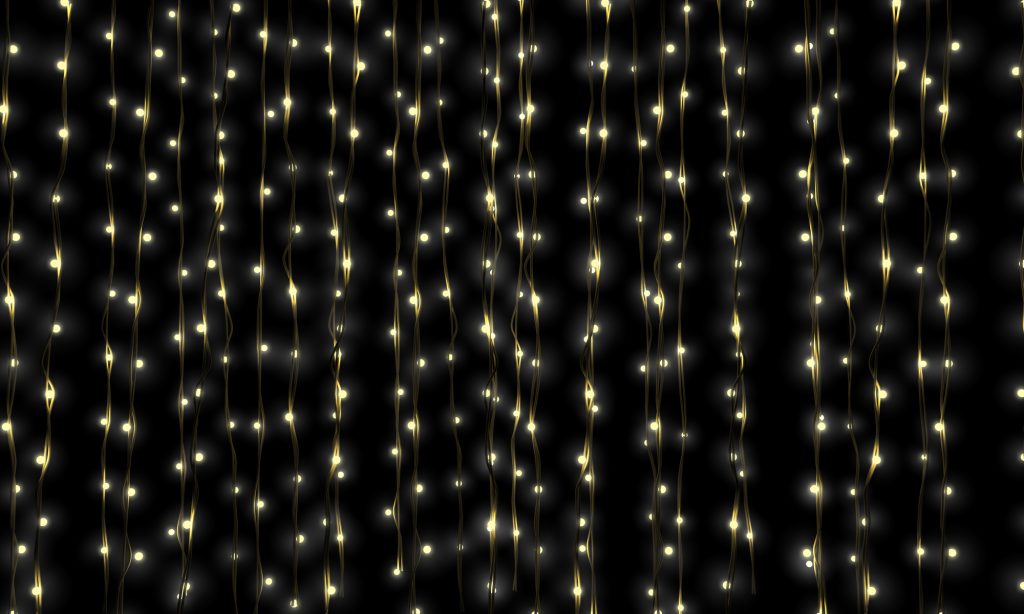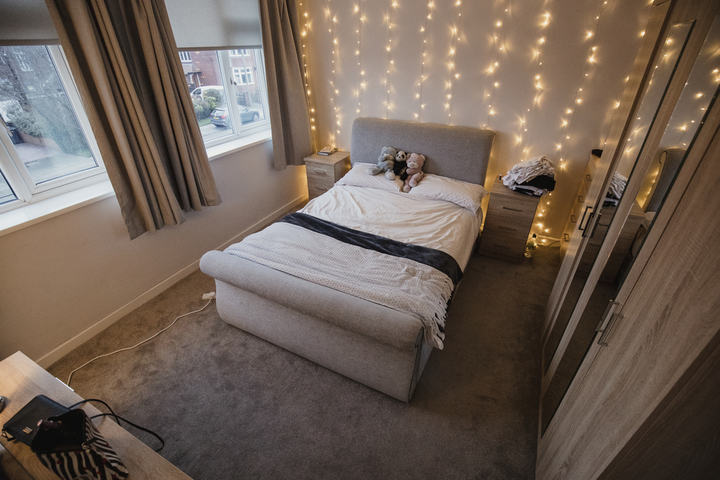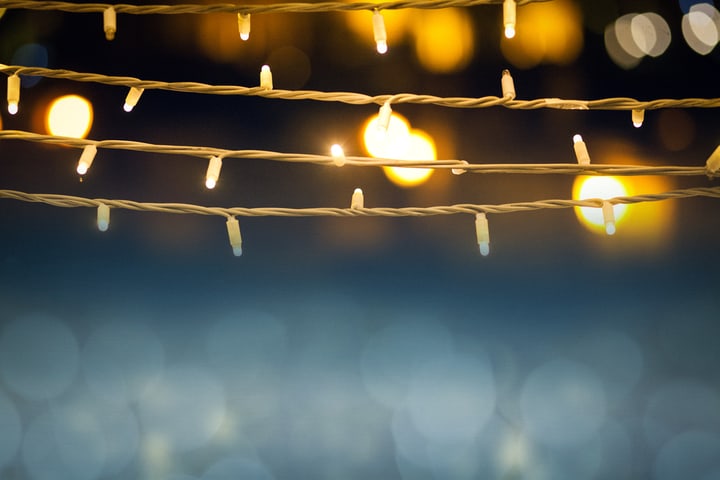When you’re looking into lighting your home, you might see a mix of strip and rope lights and wonder what the main differences are.
After all, they look fairly similar – instead of one primary light source like you get with a bulb, you get a series of lights in a row.
But they aren’t the same, and you must understand what those differences are because they’ll impact which one you decide is suitable for your home.
Strip lights are designed as permanent fixtures, while rope lights are more temporary, ideal for outdoor use or in rented properties. Strip lights are generally brighter, but the electrical components are more visible – they’re better used in coving or under units where the strip itself isn’t visible.
Let’s dive a little deeper as we explore:
- The key differences between strip and rope lights
- Which one you should choose for your bedroom
- When rope lights are the better option
Strip Light Vs Rope Light: Key Differences

The most obvious difference between strip and rope lights is where you place them in your room.
Strip lights are more of a permanent installation – they should be stuck to the wall or surface where you’re going to use them, and then you leave them there until they fail or you decide you no longer want them.
Rope lights are more temporary and aren’t fixed to a surface. You might instead wrap them around bedposts or use them outdoors draped over a fence or along a patio edge.
Another key difference is in the look of the lights up close.
A strip light will normally have all of the components on display, making them look quite technical.
They’re not usually something you have on the show but are much better hidden either in coving or in a false ceiling or on the underside of cabinets or shelving to provide downlighting.
Rope lights are instead fully-encased, and while you can see the wires connecting each light, there’s nothing that looks like ‘circuitry,’ as it were. So having a rope light out in the open isn’t as unappealing.
Because rope lights are encased, they are sometimes (although not always) rated for use outdoors.
You won’t be surprised to realize that lights need to be waterproof if you want to use them where they’re exposed to the elements – strip lights can only be used outdoors if they’re in a protective sealed casing, whereas some rope lights are good to go.
Strip lights do tend to be more flexible in their lighting options. For example, rope lights are usually either one color, or they offer a selection of colors but are relatively limited.
With strip lights, you can get single-tone options, but there are also fully RGB strips that give you the choice of 16 million different shades.
There are also RGBIC strips with multiple chips that let one single strip display a range of colors at once – so you can have a rainbow effect along the wall.
However not all rope lights are basic. There are some options from popular brands like Govee and Philips Hue (Amazon) that offer a vibrant mix of shades, but they are really expensive.
They do benefit from seeming like one uniform light, although you can achieve the same with a strip light if you use a diffuser cover.
Is Strip Light Brighter Than Rope Light?
There’s no definitive answer: all strip lights are brighter than all rope lights. It very much depends on the light that you buy.
Broadly, most strip lights will be brighter than rope lights, especially if you’re comparing similarly priced strip and rope lights.
The density of the LEDs – how close they are together – is often higher on strip lights, which is the biggest impact on brightness.
If your priority is getting a brighter light to illuminate more of a room, look for a strip light instead of a rope light if possible, and choose one with a higher density – 60 LEDs per meter or more.
Which Light Is More Suitable For A Bedroom?

This all depends on what you want for your bedroom lighting. Everyone’s requirements are different.
Suppose you own your home and want a more permanent light solution that is brighter. In that case, strip light will be a better solution, especially if you already have coving or a false ceiling where you can install it without visible circuitry.
Your bedroom has multiple purposes, but mainly you want somewhere you can fall asleep, so brightness isn’t always the biggest consideration.
Relaxation is more important. While having lights that can be bright is useful if you need to wake up or use your bedroom as a study space, there are other lights you could use for that.
Rope lights, being a lot more flexible (both literally and in terms of how you use them), could therefore be an excellent option to wrap around your headboard.
You then have lights that are close enough to serve for reading, but that will be gentle enough that you can send yourself to sleep in comfort.
Just consider the color before you buy.
Strip lights usually give you the option to adjust the color and temperature of the light, but if you want a rope light, get one with a warm light as this will be better for relaxing at night, recreating the feel of the sunset instead of brighter midday light.
Overall, there is no definitive answer on whether you should have strip or rope lights in a bedroom – it depends on your needs and circumstances. You might even want both!
When Should I Choose Rope Light Over Strip Light?

With strip lights being brighter and having more flexibility of color, they’re often the default choice if you can install them.
But you won’t always be. For example, if you rent your apartment or you’re a student moving into dorms, you’ll have rules about what you can and can’t do.
The adhesive used in strip lights can damage walls, and paint, when removed, incur costs when you move out to repair the damage.
Rope lights can also be used outdoors in places where you maybe can’t stick a strip light.
You could wrap them around fence posts, or it may be that you just want a lighting option to use during the summer before bringing it indoors during the winter when you won’t need it.
Final Words
While strip and rope lights are closely related, they definitely have different uses.
If you’re new to LED lighting, then you just need to stop and think about what you want from your lighting before you commit to a purchase.
If you’re looking for ways to add atmosphere to a room without committing to a permanent change, or you want something to light up your evenings in the garden, then rope lights are a solid temporary solution.
But LED strip lights are relatively cheap (though don’t risk buying a poor-quality option), can last a very long time, and are amazingly flexible whether you want bright or subtle lighting as a semi-permanent option.
Do you have strip or rope lights in your home? Do you have any other LED questions not answered here?

